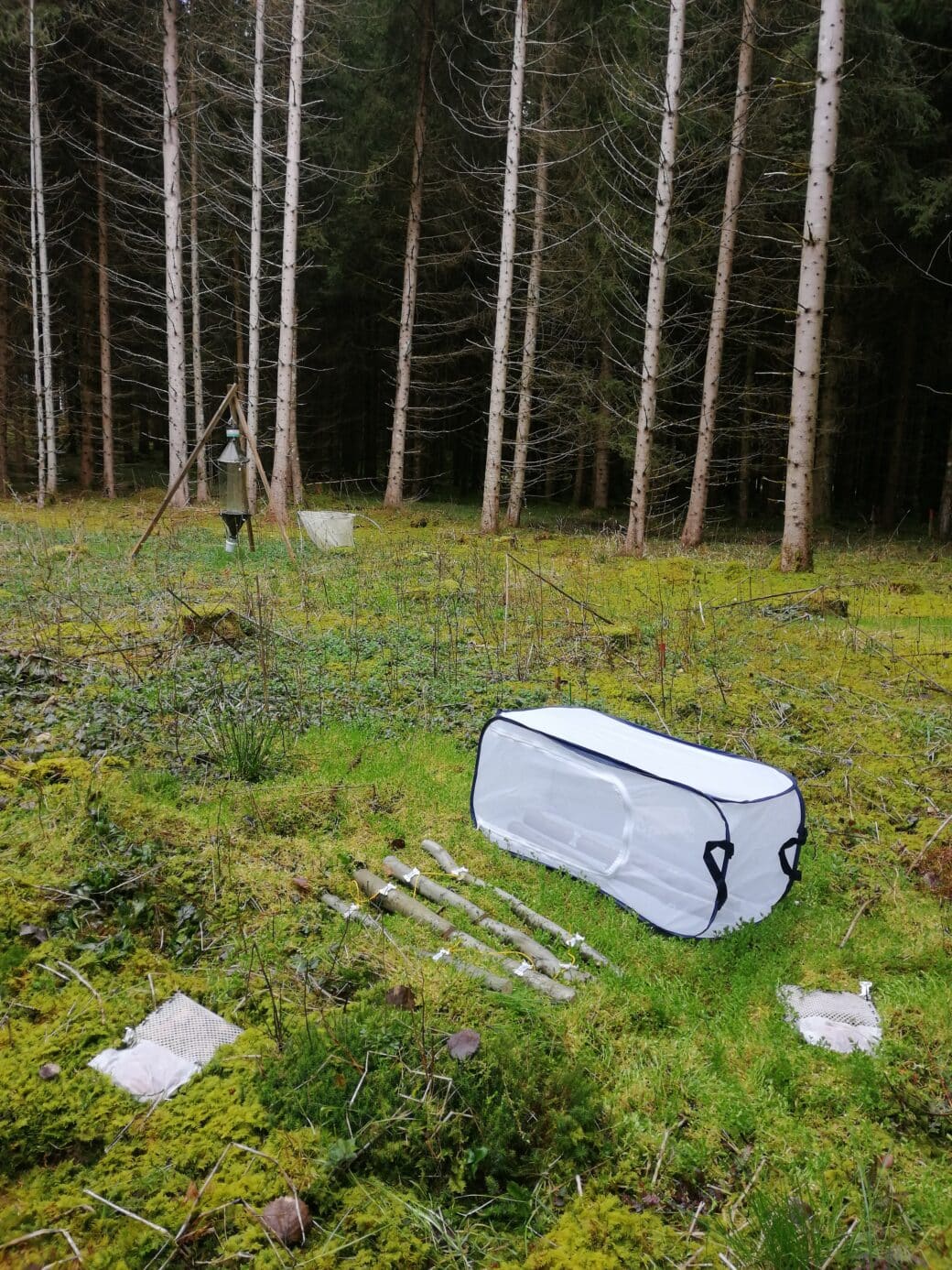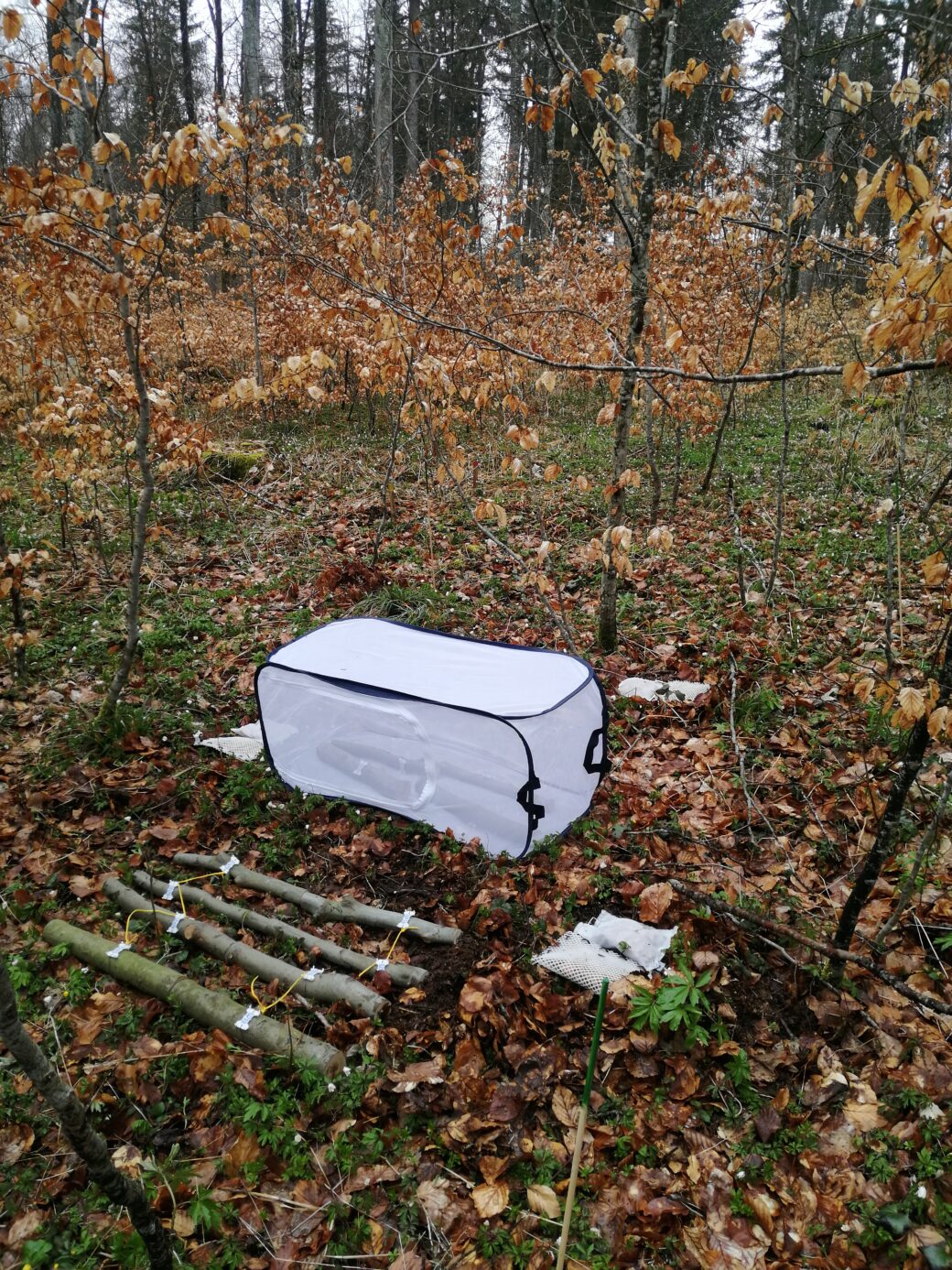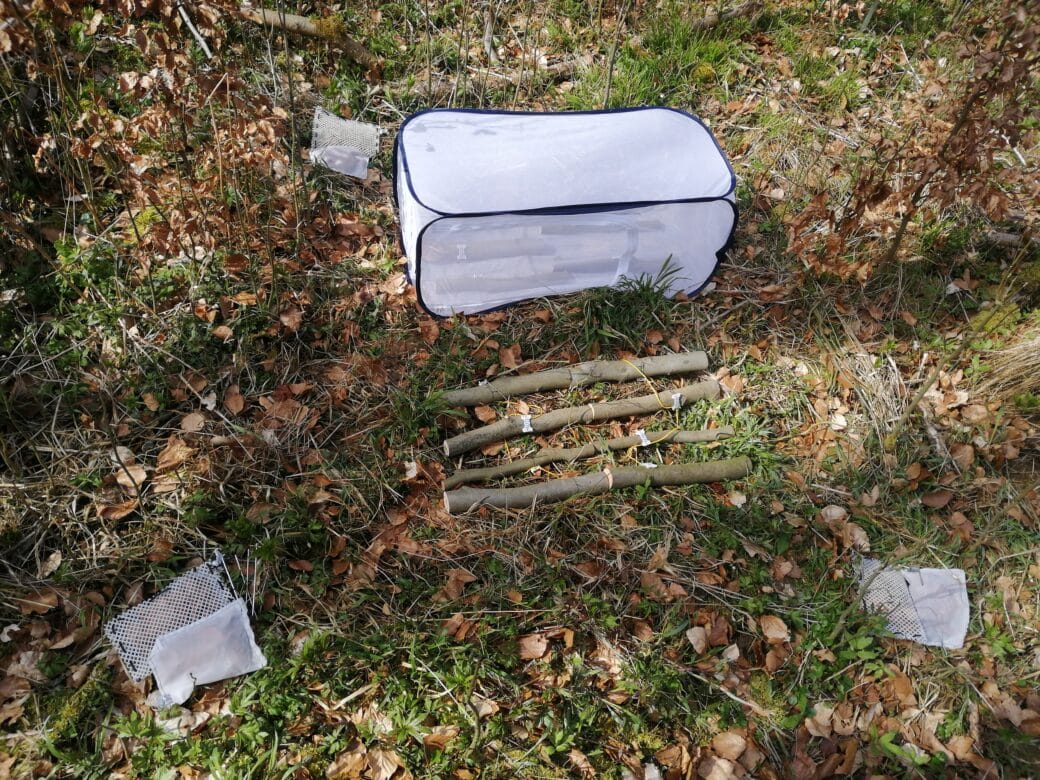Effects of canopy opennes and forest management intensity on decomposition rate and decomposer communities of different types of necromass

Decomposition of dead organic matter, necromass, is a key ecosystem process in all ecosystems as it affects local soil fertility and global carbon cycling. There are different types of necromass (e.g. dead wood, leaf litter or carrion) and they have different decomposer communities. The quantification of the contribution of those communities to the decomposition is largely unknown. Considering ongoing global biodiversity loss and particularly declines in insect populations and diversity, a better understanding of the role of different decomposer taxa, particularly insects, is needed.
In forests, canopy cover and other characteristics associated with forest management are affecting decomposer communities and decomposition rates. Yet, we lack a comprehensive understanding of how decomposer communities and decomposition rates of different necromass types differ between a closed forest canopy and forest gaps and how this differs between forests managed at different intensity. To improve our understanding of decomposition processes and associated carbon and nutrient cycles, studies are needed which compare the role of different drivers of decomposition between different types of necromass.
With the CaFoDec project, we study how two major drivers of forest ecosystem change, i.e. forest management intensity and canopy openness, are affecting decomposition rates and communities of different types of necromass directly and indirectly via effects on microbe, invertebrate and vertebrate decomposer communities. We will use the forest gaps provided by the FOrest gap eXperiment (FOX) within the Biodiversity Exploratories.
We expose standardized substrates, measure mass loss to quantify decomposition rates and identify the decomposer communities.
For studying the decomposition of carrion, we expose dead rats. To quantify the contribution of different decomposer groups, rates are either exposed without protection, within coarse cages to exclude vertebrates or in fine cages to exclude also invertebrates. We trap insects and sample the microbial community; vertebrates are recorded by camera traps.
To measure decomposition processes of leaf litter, litter bags are deployed for 12 months including litter bags of fine and coarse mesh that exclude invertebrates or give access to invertebrates, respectively. After recovery, we sample microbial communities by metabarcoding and collect invertebrates.
To study decomposition of deadwood, freshly cut wood samples are exposed at the plots. After 12 months, we rear the invertebrate decomposers. Microbial decomposers (i.e. fungi and bacteria) are recorded by meta-barcoding of wood samples collected from the exposed wood. Wood decomposition will be quantified as dry mass loss.











